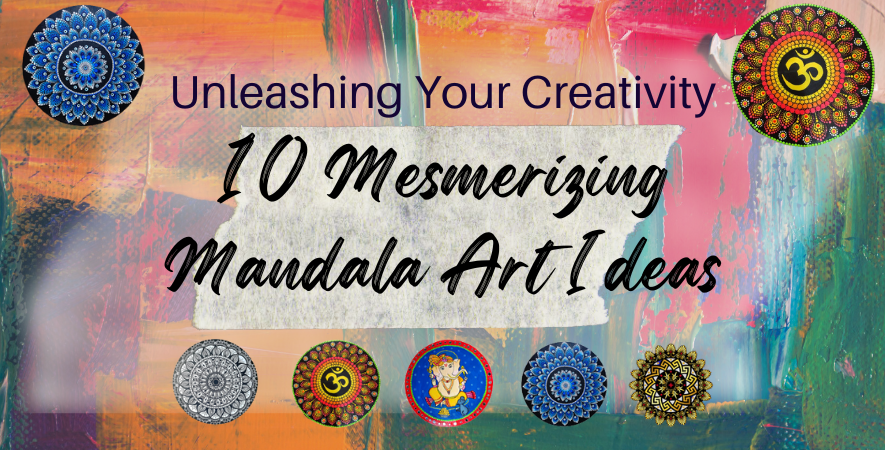Meditative Art: How Mandala Drawing Enhances Your Mental Well-being
In today’s fast-paced and stressful world, finding ways to enhance our mental well-being is of utmost importance. Meditation has long been known for its calming effects, but did you know that mandala drawing can also be a powerful tool in promoting relaxation, reducing anxiety, and improving overall mental health? In this comprehensive article, we explore the fascinating world of meditative art, specifically focusing on how mandala drawing can positively impact your mental well-being.
Understanding Mandala Drawing
Mandalas are intricate geometric patterns that originate from ancient spiritual traditions. The word “mandala” itself means “circle” in Sanskrit, and it represents the universe and the interconnectedness of all things. These captivating patterns are often used as a form of meditation and have been embraced by various cultures for their therapeutic properties.
Mandala drawing involves the creation of these intricate designs, whether by hand or using digital tools. The process of drawing mandalas requires focus, attention to detail, and a meditative mindset. As you immerse yourself in the creative process, you begin to experience a state of flow, which helps in quieting the mind and promoting a sense of calmness.
The Therapeutic Benefits of Mandala Drawing
1. Stress Reduction
Engaging in mandala drawing can significantly reduce stress levels. The repetitive and rhythmic nature of creating the patterns helps to shift focus away from daily worries and concerns. This meditative practice allows the mind to enter a state of relaxation, activating the body’s natural relaxation response.
2. Anxiety Relief
For individuals struggling with anxiety, mandala drawing can be an effective coping mechanism. The concentration required during the drawing process can help divert anxious thoughts, providing relief from the symptoms of anxiety. As a result, it becomes easier to achieve a sense of tranquility and inner peace.
3. Mindfulness and Presence
Drawing mandalas necessitates being fully present in the moment. You become attuned to each stroke, each curve, and each intricate detail. This focus on the present moment enhances mindfulness and enables you to let go of past regrets and future worries, fostering a greater sense of self-awareness.
4. Enhanced Creativity
Mandala drawing is an art form that encourages creativity and self-expression. As you design and create your unique mandalas, you tap into your inner creativity and unleash hidden talents. This creative exploration can have a positive impact on your overall mental and emotional well-being.
5. Emotional Healing
Creating mandalas can be a form of emotional release and healing. The process of expressing emotions through art can be therapeutic, allowing you to process feelings and emotions in a safe and non-judgmental way. It offers a channel to explore complex emotions, leading to a deeper understanding of oneself.
6. Improved Concentration
The intricate and detailed nature of mandalas demands focus and concentration. As you invest time and effort in the drawing process, you gradually improve your ability to concentrate on tasks, both artistic and otherwise, in your daily life.
Incorporating Mandala Drawing into Your Daily Routine
Now that we have explored the numerous benefits of mandala drawing, you might be wondering how to incorporate this meditative art form into your daily routine. Here are some simple steps to get you started:
1. Gather Your Supplies
To begin, gather the necessary supplies. All you need is paper, a compass to draw perfect circles, a ruler, and colored pencils or markers. You can also use digital drawing tools if you prefer a digital approach.
2. Create a Peaceful Environment
Find a quiet and peaceful space where you can comfortably focus on your mandala drawing. Dim the lights, light a scented candle, or play calming music to set the mood.
3. Choose Your Design
Decide on the design of your mandala. You can follow traditional patterns or create your own unique design. There are no rules when it comes to mandala drawing, so let your creativity flow.
4. Start Drawing
Begin drawing your mandala from the center outward. Let your intuition guide you as you add shapes, lines, and colors. Don’t worry about making mistakes; remember, this is a meditative practice, and perfection is not the goal.
5. Embrace the Process
As you draw, focus on the process rather than the end result. Let go of any expectations and simply enjoy the experience of creating art.
6. Practice Regularly
Consistency is key to experiencing the full benefits of mandala drawing. Set aside some time each day or week to engage in this meditative practice. The more you do it, the more profound its effects on your mental well-being.
Conclusion
In conclusion, mandala drawing is a powerful and accessible tool for enhancing your mental well-being. The process of creating intricate patterns not only promotes relaxation but also reduces stress, relieves anxiety, and fosters emotional healing. By incorporating mandala drawing into your daily routine, you can experience a profound positive shift in your overall mental and emotional health.
So, why not give mandala drawing a try? Take a moment to immerse yourself in this captivating meditative art form, and you may find yourself on a transformative journey to improved mental well-being.


